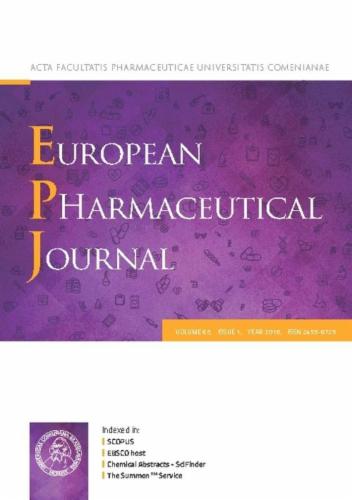优化匈牙利药物电子文档:逐项、完整、历史和标准化事件记录。
IF 4.3
3区 医学
Q1 PHARMACOLOGY & PHARMACY
引用次数: 0
摘要
医院护理是一个非常复杂的过程,需要在电子病历中全面记录病人治疗过程的方方面面。这种护理的一个重要组成部分就是准确跟踪病人的用药情况。目前全球使用的电子用药系统并未统一采用国际标准,其互操作性仍是一个悬而未决的问题。我们认识到有必要开发一套标准化的数据元素,以确保文档的一致性和准确性。尽管所研究的用药系统表现出各种优缺点,并能令人满意地记录用药过程的某些方面,但没有一个系统能达到最佳记录的必要水平。我们的论文以逐项、完整、历史和标准化的方式确定了所有事件的电子数据要求,从而为用药记录提出了一个新的视角。为了弥补这一不足,我们在研究中首次收集、定义并引入了全面记录用药子流程所需的基本数据元素。在设计这些数据要求时,我们采用了快速健康互操作性资源(FHIR)数据交换标准。我们的研究确定并归类了 138 个对描述完整用药流程至关重要的数据元素,包括药物描述、申请、分配和管理。这些数据元素被分为基本类别和补充类别。我们制定了一份调查表来评估用药系统。在一项试点研究中,我们测试了目前在匈牙利运行的 5 个用药系统的质量。我们的分析评估了电子用药记录的准确性以及所记录数据元素与国际标准的对应性。没有一个系统能够准确记录用药情况或捕捉到所有基本数据元素。表现最好的系统能够记录 63% 的基本数据元素,而表现最差的系统只能记录 30%。这些系统中数据元素的名称和数值也不符合国际标准。这项研究的主要临床药学用途是加强医院的数字药物记录,以满足全面的数据记录要求,确保更加合规,并提高其适用性,以丰富临床健康数据文件,实现真实世界研究、药物警戒分析和确定药物重新定位的机会。本文章由计算机程序翻译,如有差异,请以英文原文为准。

Optimising electronic documentation of medication in Hungary: Itemised, complete, historical, and standardised event recording
Hospital care is a highly complex process, requiring comprehensive documentation of all aspects of the patient journey in electronic health records. A critical component of this care is the accurate tracking of patient medications. International standards are not consistently incorporated into the electronic medication systems currently in use worldwide, and their interoperability remains an unresolved issue. We recognised the need to develop a set of standardised data elements that ensure consistent and accurate documentation. Although the medication systems studied exhibit various strengths and weaknesses and can satisfactorily document certain aspects of the medication process, none achieve the necessary level of optimal documentation. Our paper presents a new perspective on medication recording by identifying the electronic data requirements for all events in an itemized, complete, historical, and standardized manner. To address this gap, we collected, defined, and introduced the essential data elements required for the comprehensive documentation of medication sub-processes for the first time in our study. The Fast Health Interoperability Resources (FHIR) data exchange standard was employed for designing these data requirements. Our research identified and categorised 138 data elements essential for describing the complete medication process, including medication description, requests, dispensation, and administration. These data elements were divided into fundamental and supplementary categories. We developed a survey form to assess medication systems. In a pilot study, we tested the quality of 5 medication systems, currently in operation in Hungary. Our analysis assessed the accuracy of the electronic recording of medication and the correspondence of the recorded data elements with international standards. None of the systems demonstrated the ability to document medication accurately or capture all fundamental data elements. The best-performing system managed to record 63 % of all fundamental data elements, while the worst-performing system managed only to document 30 %. The names and the values of data elements in these systems did not comply with international standards either. The primary clinical pharmaceutical usefulness of this study was to enhance the digital documentation of medication in hospitals to meet comprehensive data recording requirements, ensure greater compliance, and improve their suitability for enriching clinical health data files, enabling real-world studies, pharmacovigilance analyses, and the identification of drug repositioning opportunities.
求助全文
通过发布文献求助,成功后即可免费获取论文全文。
去求助
来源期刊
CiteScore
9.60
自引率
2.20%
发文量
248
审稿时长
50 days
期刊介绍:
The journal publishes research articles, review articles and scientific commentaries on all aspects of the pharmaceutical sciences with emphasis on conceptual novelty and scientific quality. The Editors welcome articles in this multidisciplinary field, with a focus on topics relevant for drug discovery and development.
More specifically, the Journal publishes reports on medicinal chemistry, pharmacology, drug absorption and metabolism, pharmacokinetics and pharmacodynamics, pharmaceutical and biomedical analysis, drug delivery (including gene delivery), drug targeting, pharmaceutical technology, pharmaceutical biotechnology and clinical drug evaluation. The journal will typically not give priority to manuscripts focusing primarily on organic synthesis, natural products, adaptation of analytical approaches, or discussions pertaining to drug policy making.
Scientific commentaries and review articles are generally by invitation only or by consent of the Editors. Proceedings of scientific meetings may be published as special issues or supplements to the Journal.

 求助内容:
求助内容: 应助结果提醒方式:
应助结果提醒方式:


